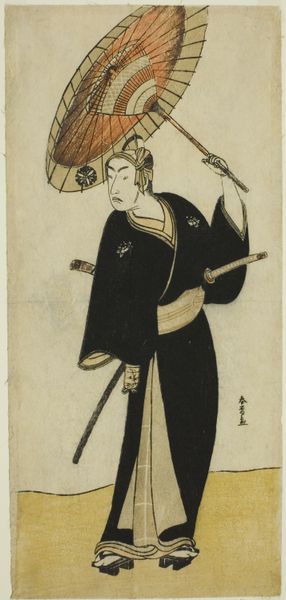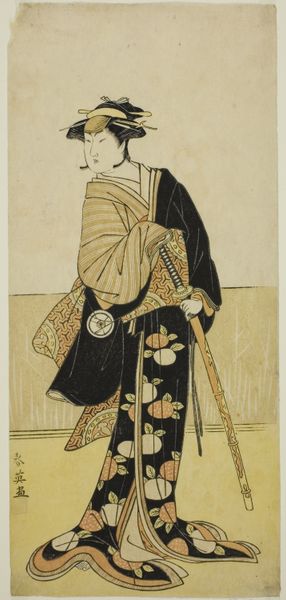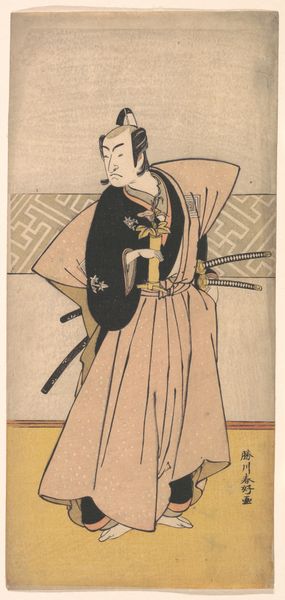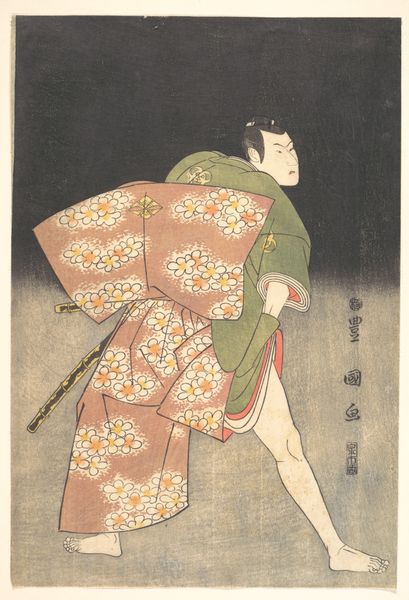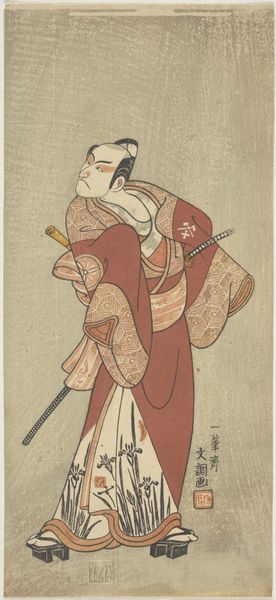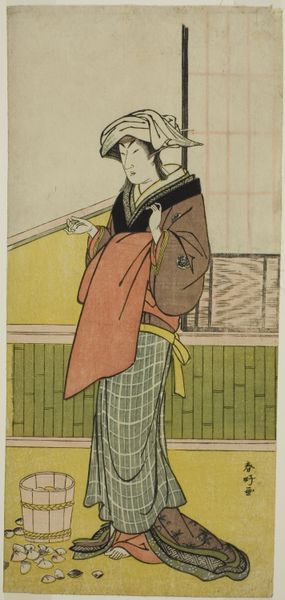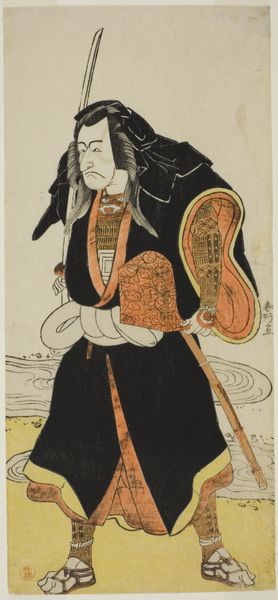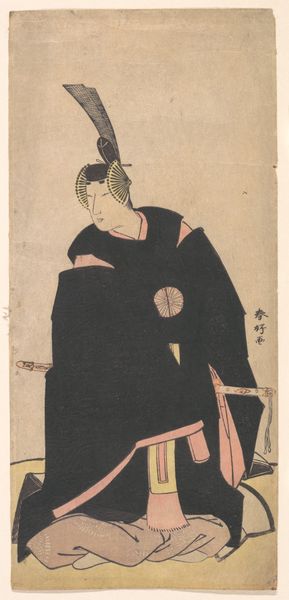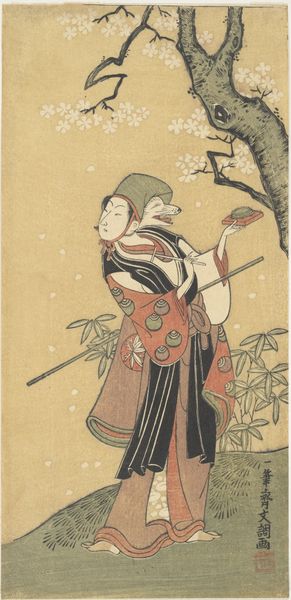
The Third Ichikawa Yaozo in the Role of the Otokodate Sukeroku 1784
0:00
0:00
print, woodblock-print
#
portrait
# print
#
caricature
#
asian-art
#
caricature
#
ukiyo-e
#
figuration
#
woodblock-print
Dimensions: 11 7/8 x 5 3/4 in. (30.2 x 14.6 cm) (trimmed)
Copyright: Public Domain
Editor: Here we have Katsukawa Shunko’s woodblock print from 1784, "The Third Ichikawa Yaozo in the Role of the Otokodate Sukeroku." I’m struck by how stylized it is, almost like a theatrical poster. How do you interpret this work, especially within its cultural context? Curator: This print provides a fascinating glimpse into the Edo period's complex social and cultural dynamics. Ukiyo-e, like this one, wasn't just art; it was a commentary on celebrity, gender roles, and social mobility. Notice the kabuki actor. He’s playing an otokodate, a kind of Robin Hood figure. What does his exaggerated pose and theatrical attire tell us about the values of the time? Editor: It seems like it's playing with gender a bit. The character, though male, is presented in a very stylized, almost flamboyant way. Curator: Exactly. Kabuki was a space where gender norms were constantly negotiated and often subverted. These prints served as a form of mass media, popularizing these performances and the personas of the actors. And consider the intended audience. These prints were consumed by a burgeoning merchant class, who were seeking new forms of entertainment and self-expression. Editor: So, it’s not just a portrait, but a reflection of the social tensions and entertainment trends of the time? Curator: Precisely. It allows us to think about how representation, particularly of performers, shaped and reflected evolving social identities. It's a powerful reminder that art is never created in a vacuum. How do you see its message resonating today? Editor: I think we're still fascinated by celebrity culture and the construction of identity. It’s interesting to consider how little that’s changed! Curator: Yes, this piece encourages us to engage with how identities are formed, performed, and circulated within broader social narratives, both then and now. It underscores the intersectionality of gender, class, and artistic expression. Editor: Thanks, this changed my perspective about seeing it as more than just a stylized print, it's really a historical document!
Comments
No comments
Be the first to comment and join the conversation on the ultimate creative platform.
